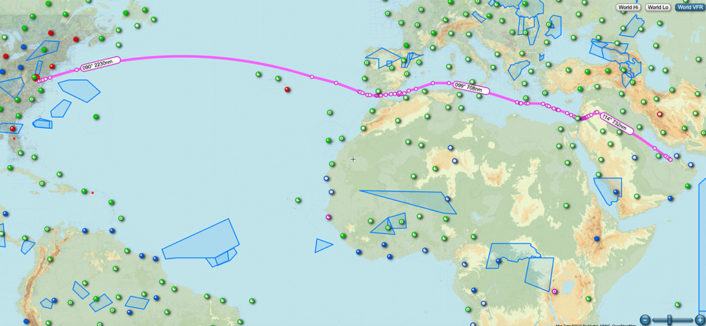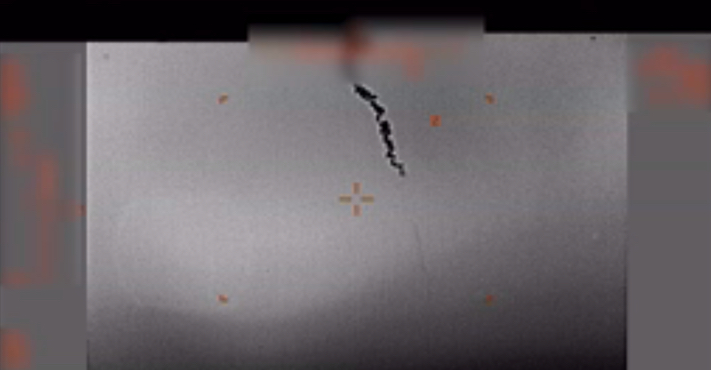The BAMS-D drone was reportedly intercepted by a Khordad missile system.
On June 19, 2019, at around 23.35 GMT, a U.S. Navy Broad Area Maritime Surveillance (or BAMS-D) demonstrator, an RQ-4A UAS (Unmanned Aerial System) used for testing and development of the MQ-4C Triton BAMS aircraft, was shot down by an Iranian surface-to-air missile system while operating in international airspace over the Strait of Hormuz.
Here’s the latest statement released by U.S. Central Command along with the below footage showing the drone falling from the sky trailing smoke.
“A U.S. Navy RQ-4 was flying over the Gulf of Oman and the Strait of Hormuz on a surveillance mission in international airspace in the vicinity of recent IRGC maritime attacks when it was shot down by an IRGC surface to air missile fired from a location in the vicinity of Goruk, Iran.
This was an unprovoked attack on a U.S. surveillance asset that had not violated Iranian airspace at any time during its mission.
This attack is an attempt to disrupt our ability to monitor the area following recent threats to international shipping and free flow of commerce.
Iranian reports that this aircraft was shot down over Iran are categorically false.
The aircraft was over the Strait of Hormuz and fell into international waters.
At the time of the intercept, the RQ-4 was operating at high-altitude approximately 34 kilometers from the nearest point of land on the Iranian coast.
This dangerous and escalatory attack was irresponsible and occurred in the vicinity of established air corridors between Dubai, UAE, and Muscat Oman, possibly endangering innocent civilians.”
Here’s the video, probably filmed from an IR camera of a nearby U.S. ship:
The BAMS-D is a RQ-4A Global Hawk High-Altitude Long Endurance (HALE) Unmanned Aircraft System (UAS) and provides real-time intelligence, surveillance and reconnaissance missions (ISR) over vast ocean and coastal regions.
As part of what was initially the Global Hawk Maritime Demonstration program, beginning in 2006, before the Global Hawk platform was selected as the BAMS winner, the U.S. Navy purchased five RQ-4As from the U.S. Air Force: at least one RQ-4A Block 10 was assigned to the VX-20 at Patuxent River for test purposes some time ago.
Although the test aircraft are referred to as BAMS demo drones, they are sensibly different from the actual MQ-4C BAMS Triton that, in spite of the same basic airframe, has a completely different radar and surveillance equipment. Dealing with the U.S. Navy’s MQ-4C “Triton” Broad Area Maritime Surveillance (BAMS), this is an ISR (Intelligence Surveillance Reconnaissance) platform that will complement the P-8A Poseidon within the Navy’s Maritime Patrol and Reconnaissance Force family of systems: for instance, testing has already proved the MQ-4C’s ability to pass FMV (Full Motion Video) to a Poseidon MPA (Maritime Patrol Aircraft). An advanced version than the first generation Global Hawk Block 10, the drone it is believed to be a sort of Block 20 and Block 30 Global Hawk hybrid, carrying Navy payload including an AN/ZPY-3 multi-function active-sensor (MFAS) radar system, that gives the Triton the ability to cover more than 2.7 million square miles in a single mission that can last as long as 24 hours at a time, at altitudes higher than 10 miles, with an operational range of 8,200 nautical miles. The U.S. Navy plans to procure 68 aircraft and 2 prototypes.
The BAMS-D aircraft shot down on Jun. 19, was probably the article 166510 that was deployed from NAS Patuxtent River to Al Dhafra Air Base, UAE, on Jun. 15, 2019, as “TRITON 2” (with an ATA – Actual Time of Arrival – at 20.13 UTC).
Here’s the route the aircraft followed to deploy:

According to our sources, there have been a variety of BAMS-D drone deployments
Most recently, one from March 20, 2019, to Jun. 13, 2019, involving an unknown BAMS-D serial number that flew to Al Dhafra as TRITON4 and returned to NAS Pax River as TRITON 3.
Dealing with reg. 166510, the aircraft reportedly shot down over the Strait of Hormuz has been deployed to the region before in 2017 and 2018:
| date | callsign | origin | destination | atot | ata | aircraft_type | registration |
| 12.12.2017 | TRITON4 | KNHK | OMAM | 04:27:00 | 19:46:00 | ZZZZ | 166510 |
| 13.05.2018 | TRITON2 | OMAM | KNHK | 19:53:00 | 17:08:00 | Q4 | 166510 |













